The Sacred Kalash : A Symbol of Abundance for Hindus in the USA
By Lokanath Mishra
In Hinduism, the Kalash, also known as Purna Kumbha or Ghata, is a deeply revered symbol that represents abundance, creation, and the source of life. While the traditions associated with it vary across different regions, for many Hindus in the United States, the Kalash takes a specific form and holds significant meaning.
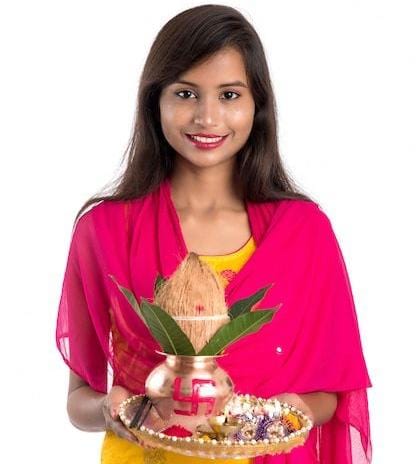
In the USA, the Kalash is typically a copper vessel with a wide, round base and a narrow mouth. According to Sanskrit scholars, its importance is rooted in the Rig Veda, where it is described not merely as a ritualistic object but as a representation of universal bounty.

During religious ceremonies, devotees fill the Kalash with holy water. A coconut, with its pointed end facing upwards, is placed on the mouth of the vessel. This is followed by placing betel vines and mango leaves around the rim. This arrangement is considered a powerful symbol of prosperity and wisdom.

Hindu deities like Lord Vishnu, Lord Brahma, Lord Shiva, and Goddess Lakshmi are often depicted holding a Kalash, which further underscores its symbolism of creation, purity, and prosperity. Many believers also see the Kalash as the personification of Lord Ganesha, the remover of obstacles, and Gauri Devi, the goddess of household bounty. Due to these associations, the Kalash is an essential part of Hindu festivals and life-cycle events such as childbirth, thread ceremonies, housewarmings, and marriages.
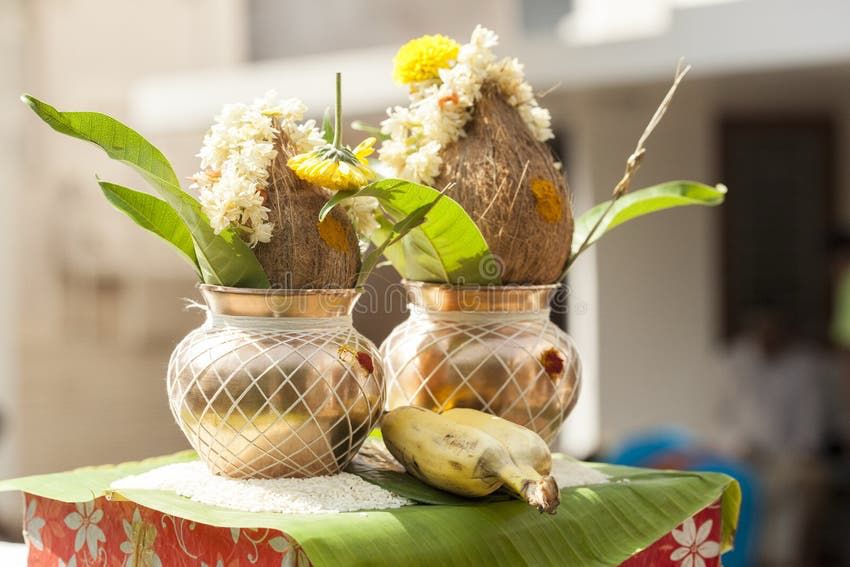
Beyond its use in formal rituals, many Hindus in the USA place a Kalash near the entrance of their homes as a sign of welcome and to attract positive energy. Placing it in the north-facing direction is believed to invite balance and happiness into the household.
The individual components of the Kalash hold a deeper spiritual meaning:
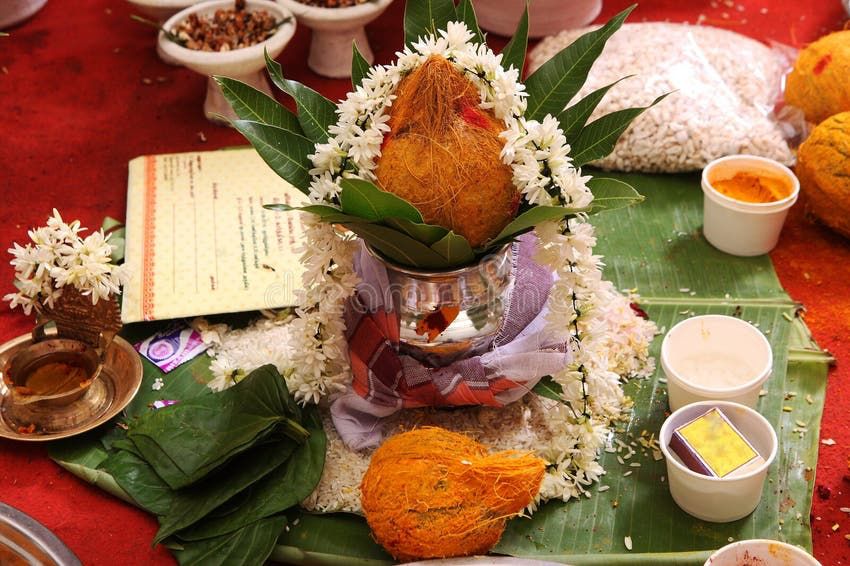
The metal pot represents fertility, symbolizing the Earth and the womb, both of which are nourishers and providers of life.
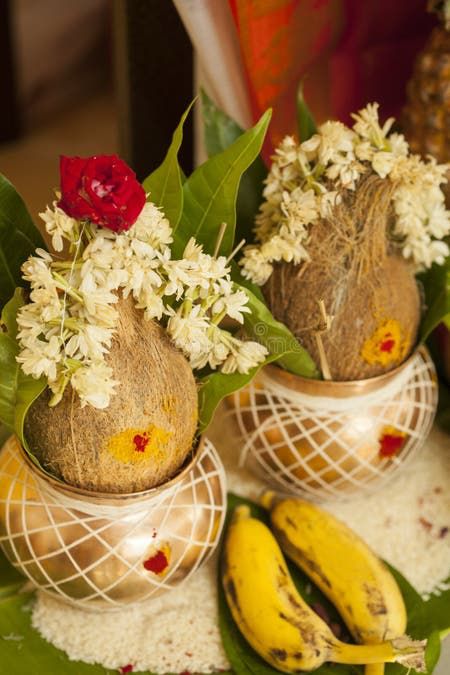
The mango leaves symbolize Kama, the god of love, invoking the pleasure and joy associated with fertility.
The coconut signifies prosperity and power.
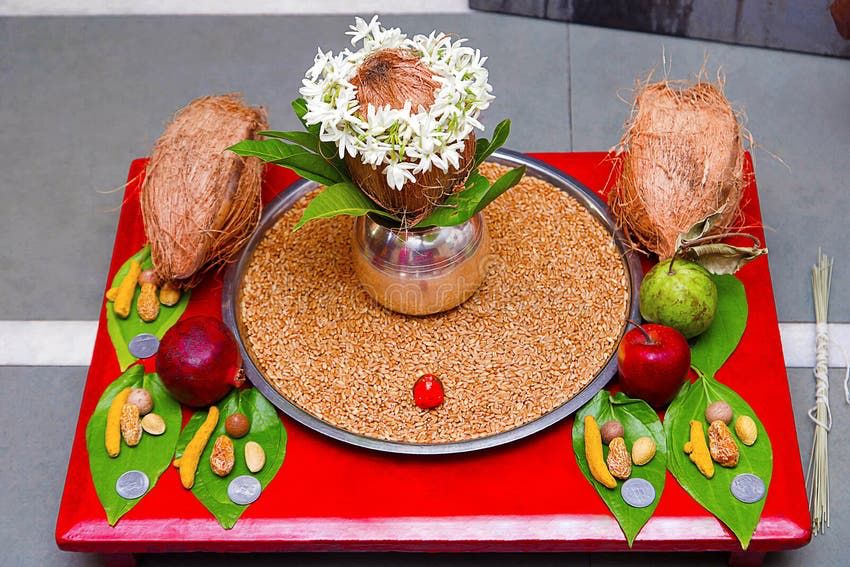
The water inside the Kalash represents the life-giving principle of the universe.
According to USA Hindu tradition, the structure of the Kalash embodies the Pancha Bhoota or five elements:
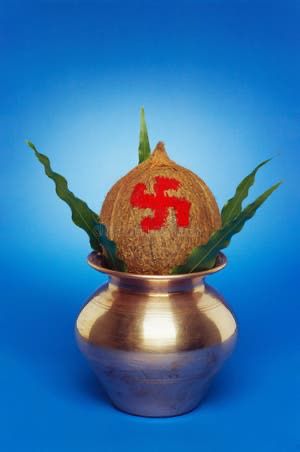
Prithvi (Earth): The metal pot
Apas (Water): The water inside
Agni (Fire): The neck of the pot
Vayu (Air): The opening
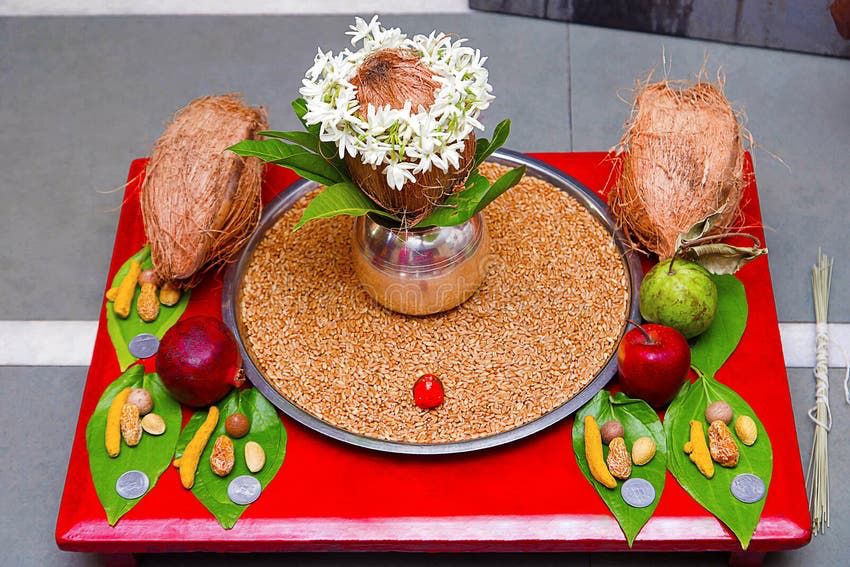
Akasha (Ether): The coconut and mango leaves at the top
The water from the Kalash is often used for Kumbha Abhisheka, a ritual anointing ceremony, or poured onto a Tulsi plant. This spiritually charged water is believed to attract positive vibrations and plays a crucial role in purification processes during rituals. The Kalash, therefore, is not just a vessel but a powerful conduit for divine energy, bringing sanctity and blessings to the homes of Hindus in the United States.
